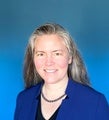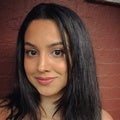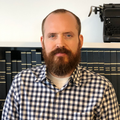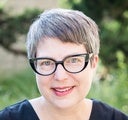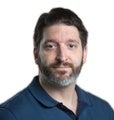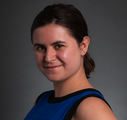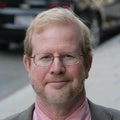Press Room
Scientific American editors are available on request for media interviews. Offering expertise in a wide range of specialties and practiced at translating science into plain English, Scientific American editors are the ideal expert guests to comment on science news of the day. Many are media trained, including broadcast and radio, and have extensive interview experience.
Laura Helmuth is editor in chief of Scientific American . She has previously been health and science editor at the Washington Post , digital news director at National Geographic , science and health editor at Slate, science editor at Smithsonian , and a news editor and reporter at Science .…read more
Laura Helmuth is editor in chief of Scientific American. She has previously been health and science editor at the Washington Post, digital news director at National Geographic, science and health editor at Slate, science editor at Smithsonian, and a news editor and reporter at Science. Helmuth is a past president of the National Association of Science Writers. She is a member of the National Academies of Sciences, Engineering, and Medicine’s standing committee on advancing science communication. She serves on the advisory boards of SciLine (a program of the American Association for the Advancement of Science that connects reporters with scientific experts), High Country News, Spectrum and 500 Women Scientists. Helmuth has a Ph.D. in cognitive neuroscience from the University of California, Berkeley, and attended the University of California, Santa Cruz’s science communication program. She speaks frequently on science communication, how to use social media effectively and how to fight misinformation. Her favorite hobbies are bird-watching, hiking and kayaking.
Jeanna Bryner is managing editor of Scientific American . Previously she was editor in chief of Live Science and, prior to that, an editor at Scholastic’s Science World magazine.…read more
Jeanna Bryner is managing editor of Scientific American. Previously she was editor in chief of Live Science and, prior to that, an editor at Scholastic’s Science World magazine. Bryner has an English degree from Salisbury University, a master’s degree in biogeochemistry and environmental sciences from the University of Maryland and a graduate science journalism degree from New York University. She has worked as a biologist in Florida, where she monitored wetlands and did field surveys for endangered species, including the gorgeous Florida scrub jay. She also received an ocean sciences journalism fellowship from the Woods Hole Oceanographic Institution. She is a firm believer that science is for everyone and that just about everything can be viewed through the lens of science.
Sunya Bhutta is an audience-development strategist and chief audience engagement editor at Scientific American .…read more
Sunya Bhutta is an audience-development strategist and chief audience engagement editor at Scientific American. Her role includes managing Scientific American’s home page, social media, newsletters, mobile app and events. Previously she was associate editor at Genetic Engineering & Biotechnology News. Her work has also been published in Time Out New York, Chronogram and Hudson Valley magazine. She has a B.A. in English and journalism from SUNY New Paltz and studied magazine and website publishing at New York University.
Lee Billings is a senior editor covering space and physics for Scientific American .…read more
Lee Billings is a senior editor covering space and physics for Scientific American. His freelance writing has appeared in many popular publications, including the New York Times, the Washington Post, Wired and Popular Mechanics. Billings is author of Five Billion Years of Solitude: The Search for Life among the Stars, which won an American Institute of Physics science writing award in the books category in 2014. He holds a degree in journalism from the University of Minnesota.
Sophie Bushwick is an associate editor who covers technology for Scientific American .…read more
Sophie Bushwick is an associate editor who covers technology for Scientific American. Previously, she worked as an editor at Popular Science and as a freelance writer, podcast producer and video host for several publications, including Discover, Gizmodo and Inside Science. Bushwick received a bachelor’s degree in physics from Carleton College before winning an American Association for the Advancement of Science Mass Media Science & Engineering Fellowship, which she spent at Scientific American.
Jen Christiansen is author of Building Science Graphics: An Illustrated Guide to Communicating Science through Diagrams and Visualizations (CRC Press) and senior graphics editor at Scientific American , where she art directs and produces illustrated explanatory diagrams and data visualizations.…read more
Jen Christiansen is author of Building Science Graphics: An Illustrated Guide to Communicating Science through Diagrams and Visualizations (CRC Press) and senior graphics editor at Scientific American, where she art directs and produces illustrated explanatory diagrams and data visualizations. In 1996 she began her publishing career in New York City at Scientific American. Subsequently she moved to Washington, D.C., to join the staff of National Geographic (first as an assistant art director–researcher hybrid and then as a designer), spent four years as a freelance science communicator and returned to Scientific American in 2007. Christiansen presents and writes on topics ranging from reconciling her love for art and science to her quest to learn more about the pulsar chart on the cover of Joy Division’s album Unknown Pleasures. She holds a graduate certificate in science communication from the University of California, Santa Cruz, and a B.A. in geology and studio art from Smith College.
Jeffery DelViscio is chief multimedia editor at Scientific American . Previously he was a Knight Science Journalism Fellow at the Massachusetts Institute of Technology.…read more
Jeffery DelViscio is chief multimedia editor at Scientific American. Previously he was a Knight Science Journalism Fellow at the Massachusetts Institute of Technology. He helped co-found STAT, where he was the first director of multimedia and creative, overseeing all interactive journalism. While there, his team won many national awards, including a George Polk Award for environmental reporting in a collaboration with Undark Magazine. He started his journalism career at the New York Times, where he worked across five different desks over a period of eight and a half years, winning multiple awards along the way, including an Emmy Award. He holds dual master’s degrees in journalism and in earth and environmental sciences from Columbia University. Before entering journalism, DelViscio worked onboard oceanographic research vessels and tracked money and politics in science from Washington, D.C.
Arminda Downey-Mavromatis is associate engagement editor at Scientific American .…read more
Arminda Downey-Mavromatis is associate engagement editor at Scientific American. She works on audience engagement, which includes managing Scientific American’s home page and social media, as well as engagement projects. Previously she was senior editorial project manager at Chemical & Engineering News. She has a B.A. in biochemistry from Barnard College of Columbia University. While in undergrad, she was an editor at The Eye, the magazine of the Columbia Daily Spectator.
Mark Fischetti oversees coverage of sustainability issues for Scientific American magazine, including climate, weather, environment, energy, food, water, biodiversity, population, and more.…read more
Mark Fischetti oversees coverage of sustainability issues for Scientific American magazine, including climate, weather, environment, energy, food, water, biodiversity, population, and more. He assigns and edits features and news by journalists and scientists and also writes in all those formats. He edits the 50, 100 & 150 Years Ago column, which highlights novel stories the magazine has published over its long history. He has been part of small teams that started and then edited two spin-off magazines, Scientific American Mind and Scientific American Earth 3.0. His 2001 article “Drowning New Orleans” predicted the widespread disaster that a storm like Hurricane Katrina would impose on the city. His video What Happens to Your Body When You Die? now has 12 million views on YouTube. Fischetti has written freelance articles for the New York Times, Smithsonian, Technology Review, Fast Company, and many others. With Tim Berners-Lee, inventor of the World Wide Web, he co-authored the book Weaving the Web, which tells the real story of how the Web was created. He also co-authored The New Killer Diseases with microbiologist Elinor Levy. Fischetti is former managing editor of IEEE Spectrum magazine and of Family Business magazine. He has a physics degree and has twice served as Attaway Fellow in Civic Culture at Centenary College of Louisiana, which awarded him an honorary doctorate. Fischetti is a frequent broadcaster and has appeared on CNN, NBC’s Meet the Press, the History Channel, NPR News and many news radio stations.
Josh Fischman is a senior editor at Scientific American , leading coverage of medicine and of science policy from Washington, D.C.…read more
Josh Fischman is a senior editor at Scientific American, leading coverage of medicine and of science policy from Washington, D.C. He co-hosts the COVID, Quickly podcast. His work has been selected for the Best American Science Writing 2012 anthology, and he has won the Blakeslee Award for excellence in medical reporting and other writing awards. He has written cover stories for National Geographic and U.S. News & World Report, as well as features for Time magazine and the Los Angeles Times. As an editor, Fischman has been fortunate to work on many stories that have won top journalism prizes. He has been editor in chief of Earth magazine and deputy editor in chief of Chemical & Engineering News, supervising worldwide coverage. He has directed technology and science coverage for the Chronicle of Higher Education and was a senior writer and editor at U.S News & World Report, a deputy news editor at Science and a senior editor at Discover. Fischman has been interviewed about science and medicine on NPR, CNN, MSNBC, BBC World Service and the Weather Channel, and he has been a master of ceremonies on stages at the USA Science & Engineering Festival and the Consumer Electronics Show. He is author of a leading medical education guidebook entitled The U.S. News & World Report Ultimate Guide to Medical Schools (Sourcebooks, 2006).
Press Inquiries
- Sarah Hausman
